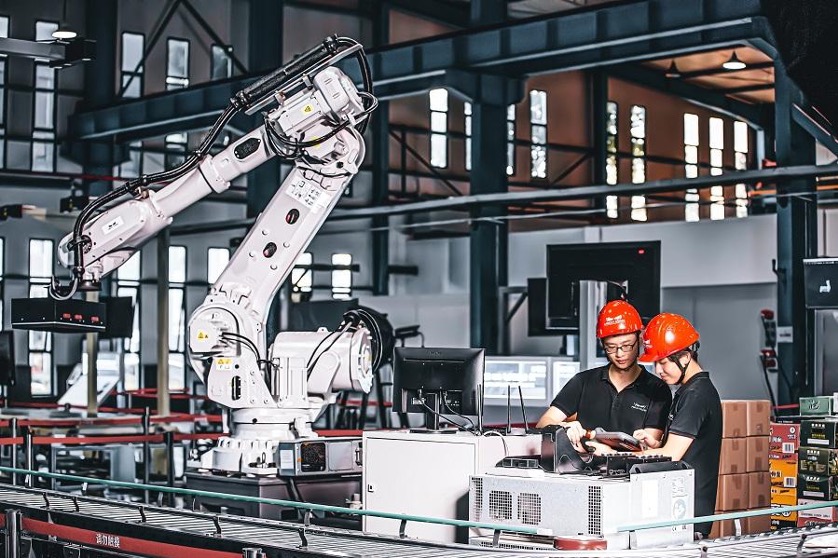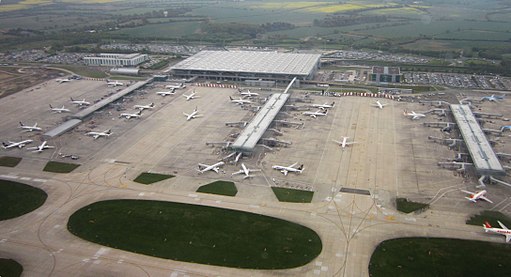The world of business is constantly growing, and while many industries are in a state of flux, some are expected to show tremendous growth in 2023.
Despite Barclays Capital Inc. forecasting 2023 to be as one of the worst for the world economy in over forty years, it’s not all doom and gloom, and below we’ve listed sectors of the global economy that we believe will see the most growth this year.
Software

According to experts, the software industry is one of the most promising sectors for future profitability and expansion. This is due in large part to the ever-increasing reliance on digital technologies for nearly all aspects of life and business.
Moreover, automation continues to drive down the cost of production for many goods and services. While this may lead to job losses in certain sectors, it also opens up opportunities for tech-savvy companies to capitalize on this development by providing innovative solutions that leverage data science and artificial intelligence (AI).
Low-code development technologies
In spite of a challenging year, the demand for low-code development technologies is booming. According to Gartner’s latest forecast, this market is set to expand by 19.6% on an annual basis and hit $26.9 billion in 2023 – with the estimated Low-Code Application Platform (LCAP) sector totaling nearly $10 billion through the same period.
“Organizations are increasingly turning to low-code development technologies to fulfill growing demands for speed application delivery and highly customized automation workflows,” said Varsha Mehta, Senior Market Research Specialist at Gartner.
“Equipping both professional IT developers and non-IT personas — business technologists — with diverse low-code tools enables organizations to reach the level of digital competency and speed of delivery required for the modern agile environment.”
Low-Code Development Technologies Revenue (Millions of U.S. Dollars) – Projection
| 2021 | 2022 | 2023 | 2024 | |
| Low-Code Application Platforms (LCAP) | 6,324 | 7,968 | 9,960 | 12,351 |
| Business Process Automation (BPA) | 2,416 | 2,585 | 2,761 | 2,940 |
| Multiexperience Development Platforms (MDXP) | 2,081 | 2,508 | 2,999 | 3,563 |
| Robotic Process Automation (RPA) | 2,350 | 2,892 | 3,401 | 3,879 |
| Integration Platform as a Service (iPaaS) | 4,680 | 5,668 | 6,668 | 7,838 |
| Citizen Automation and Development Platforms (CADP) | 554 | 732 | 953 | 1,232 |
| Other Low-Code Development (LCD) Technologies* | 92 | 109 | 126 | 146 |
| Total | 18,497 | 22,462 | 26,869 | 31,949 |
Source: Gartner
Healthcare

Another industry likely to experience significant growth in 2023 are certain segments of the healthcare industry. Increased investments into medical research, new treatments, and improved medical technology will only continue to fuel demand for skilled professionals in this sector. Furthermore, an increased awareness among consumers about taking care of their health will drive up demand for preventative care services as well as nutraceuticals and other supplements.
Retail health clinics
As health systems battle with inadequate resources, retail clinics have emerged as advantageous providers of primary care. Driven by local convenience and spurred on further by the COVID-19 testing requirements in 2020, this segment has seen remarkable growth -21.5% from 2019 to 2021- allowing for a projected market size value exceeding $3 billion USD in 2022 alone! Drawing ever more attention are prominent names such as CVS-Aetna, Walgreens Walmart Amazon Optum United Health Group and beyond who look set to lead patient experiences into an exciting new era – one which puts accessibility at its core centerpoint while providing quality care that is both low cost and no appointment needed. This trend is expected to continue in 2023.
According to Fortune Business Insights, the U.S. retail clinics market is anticipated to experience an impressive 10.8% CAGR through 2029, with expected growth from $2 billion up to a staggering $4.22 billion by that time.
Manufacturing

With the current economic downturn, manufacturers have been presented with an unprecedented opportunity to reset. Ever-important investments in technology can be made during this time so that companies are not left behind over the next 5-10 years; a future recession should surely bring more tech talent into the industry as well. Now is their chance to capitalize on these trends and ensure their company’s stability long term.
Also, the manufacturing industry is facing a stark divide; many companies are already fully-equipped and thriving, while others lag behind. But by 2023 the situation could be more of an even playing field: it’s time to start innovating for those looking to keep pace with their competitors.
Online retailing

Online shopping has been booming since the pandemic began with more shoppers preferring the convenience of shopping from home rather than heading out into crowded stores or malls. This trend is expected to continue even after restrictions are lifted due to its cost effectiveness, ease of use, and faster delivery times compared against traditional outlets such as department stores or supermarkets. As a result, ecommerce businesses should see an increase in sales both domestically and internationally through 2023.
Despite predictions of waning interest in Black Friday, record sales across cyber week demonstrated that this phenomenon is still alive and growing. Further analysis reveals it was driven by net-new demand from consumers looking to compensate for inflation—a sign of the times as economic outlook remains uncertain heading into 2022.
Moving forward, businesses must shift focus away from aggressive discounting and toward communicating value and real difference if they are to survive these difficult days ahead.
Renewable energy

Finally, renewable energy sources such as solar power are becoming increasingly popular due both their environmental benefits including reducing carbon emissions as well as their longterm cost savings when compared against fossil fuels like oil or coal which still dominate electricity generation currently. With governments around the world investing heavily into renewable energy initiatives it appears that this industry could be poised for tremendous growth over the next few years, especially given its potential applications across multiple sectors including transportation and construction materials manufacturing.
In the next five years, renewable energy sources are expected to power a third of the world. Solar PV technology is leading this charge with 697GW projected growth, outperforming onshore wind (309 GW), hydropower (121 GW), offshore wind (43 GW) and bioenergy combined at 41GW.
According to a report by BDO Global:
- Despite global challenges, solar power is on the rise. By 2023, it’s expected that one whole terawatt of energy will be generated from this renewable source worldwide!
- Wind power stands to benefit substantially in the near future, with advancements in both storage and infrastructure capabilities for on- and offshore projects. In 2023 alone, a whopping 50% of global investments into wind technology will have been allocated towards new opportunities presented by offshore developments.
- After a period of unenthusiastic yields, the cleantech sector is poised to witness an unprecedented surge in private equity and venture capital investments. A combination of regulatory stimuli, economic motivation and scientific advancement has sparked industry confidence as $600 billion will be invested globally by 2023.
AR and VR

Going forward, there is no doubt that AR and VR technology will continue to play a major role in shaping our lives in the years ahead. The increased accessibility of hardware solutions coupled with advancements in software development means that we can expect even faster adoption rates in the near future as businesses begin experimenting with new applications for this transformative technology. We’re already beginning to see an emergence of a range of new industries ripe for disruption through use cases enabled by augmented and virtual reality – fields such as healthcare logistics, customer service automation and product visualisation are all becoming more accessible than ever before thanks to AR/VR technologies.
Furthermore, as immersive media continues gaining traction around the globe, it’s likely that it will become much easier for people from any corners of society to access these technologies in order create new forms of art or communication tools such as virtual reality short films or documentaries. Ultimately, the possibilities are endless when it comes to leveraging the potential offered by this powerful combination of hardware innovations and digital developments – meaning that we could soon be witnessing a massive transformation across all facets of our daily lives thanks to this revolutionary industry trend.
According to Kivisense, the global virtual and AR technology market projected to reach a staggering $142.4 billion by 2023 – an increase of almost tenfold from 2018. This phenomenal growth is largely driven by emerging trends that are converging wearable devices with augmented reality applications for widespread adoption on phones alone.
A Statista estimate revealed that the market for AR, VR and Mixed Reality (MR), worldwide, is forecast to expand from $27.96 billion in 2021 to $252.16 billion in 2028.
Airport Operation

Airport operations this year are expected to be more efficient and organized than ever before. Advancements in technology have enabled airports to implement automated systems for handling passenger check-in, baggage screening, and other airport services. Automation has also allowed airports to streamline the process of getting passengers from one place to another, reducing wait times and improving efficiency.
Many airports will also be equipped with facial recognition technology, allowing them to quickly identify passengers as they enter the airport. This new level of security will help ensure that only authorized personnel are able to access certain areas of the airport. In addition, some airports may offer biometric scanners that can detect suspicious behavior or items being carried by a passenger before they reach the gate.
Communication between ground staff and aircraft has also improved significantly through digital radio networks, which enable two-way communication between air traffic controllers and pilots. This allows aircraft to stay on their chosen flight paths without any need for manual coordination by air traffic control staff. Digital displays throughout the airport allow passengers to easily view flight information such as departure times and gate numbers, taking away any potential confusion at boarding time.
For those travelling short distances within Europe or North America, electric aircraft are becoming increasingly popular as advances in battery technology make them an attractive option for short flights. Electric aircraft offer an environmentally friendly alternative to traditional jet engines whilst offering comfortable seating configurations for up to eight people at a time.
A range of other innovative technologies such as augmented reality displays, interactive kiosks, self-serve lounges, and robotic carts have been developed over recent years with the aim of providing passengers with a seamless experience when travelling through an airport in 2023. Advanced analytics solutions are also being used by airlines and airports alike to provide customers with personalised service based on their preferences and travel patterns – ensuring they receive better customer service during their journey while simultaneously boosting loyalty towards particular airlines or airports.
Banking

The banking industry is expected to undergo significant changes over the next three years, culminating in 2023. Banks are facing increasing competition from non-traditional financial institutions such as fintechs and Big Techs, while customers are expecting better services and products tailored to their needs.
Innovations in technology and digital transformation will be critical for banks to remain competitive. Banks will need to use artificial intelligence (AI) and machine learning (ML) tools to provide more personalized customer experiences. AI and ML can help banks automate processes, detect fraud, offer better decision support and insights into customer behaviour, as well as identify opportunities for growth.
Banks will also invest heavily in cloud computing solutions to provide a secure, reliable service for customers. Cloud computing allows customers easy access to their data regardless of location or device type, providing a convenient way for both customers and banks to store data securely.
Regulatory changes are also expected in the banking sector over the next three years. Banks will need to be compliant with new regulations set by governments across the world. Currently, there is a growing trend towards open banking initiatives which allow third-party providers access to customer data via APIs. These initiatives are intended to promote competition in the sector by allowing smaller players an opportunity to participate in global payments networks, while also offering customers more choice over which services they use.
Finally, banks will strive to become more sustainable; this could involve reducing energy consumption or investing more of their funds into green investments such as renewable energy projects or other environmental initiatives. This would help them remain competitive in a market where sustainability is becoming increasingly important for consumers when deciding who they do business with.
Overall, it is clear that the banking sector is going through radical changes and innovation over the next few years that could significantly shape how we bank in 2023 and beyond. Banks must take advantage of new technologies while staying compliant with various regulations if they want to stay competitive in this fast-changing environment. In addition, they must develop sustainable strategies if they want their customers’ loyalty over time.
Conclusion
Overall it looks like there are several industries that have strong prospects for growth during 2023 when viewed through a macroeconomic lens; however these trends can change quickly so it’s important that businesses remain agile while adapting their strategies accordingly depending on changing consumer preferences or technological developments during this time period. By keeping these changes top-of-mind organizations can position themselves optimally for success both now and into the future.

